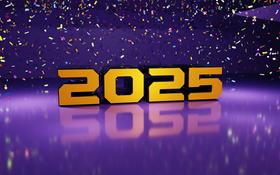For the 2025-26 school year, there is 1 public high school serving 900 students in 21085, MD.
The top ranked public high school in 21085, MD is Joppatowne High School. Overall testing rank is based on a school's combined math and reading proficiency test score ranking.
Public high school in zipcode 21085 have an average math proficiency score of 12% (versus the Maryland public high school average of 34%), and reading proficiency score of 52% (versus the 56% statewide average). High schools in 21085, MD have an average ranking of 4/10, which is in the bottom 50% of Maryland public high schools.
Public high school in zipcode 21085 have a Graduation Rate of 87%, which is more than the Maryland average of 86%.
The school with highest graduation rate is Joppatowne High School, with 85-89% graduation rate. Read more about public school graduation rate statistics in Maryland or national school graduation rate statistics.
Minority enrollment is 78% of the student body (majority Black), which is more than the Maryland public high school average of 68% (majority Black).
Best 21085, MD Public High Schools (2025-26)
School
(Math and Reading Proficiency)
(Math and Reading Proficiency)
Location
Quick Facts
Rank: #11.
Joppatowne High School
Magnet School
(Math: 10-14% | Reading: 50-54%)
Rank:
Rank:
5/
Bottom 50%10
555 Joppa Farm Rd
Joppa, MD 21085
(410) 612-1510
Joppa, MD 21085
(410) 612-1510
Gr: 9-12 | 900 students Student-teacher ratio: 16:1 Minority enrollment: 77%
Frequently Asked Questions
What are the top ranked public high schools in 21085, MD?
The top ranked public high schools in 21085, MD include Joppatowne High School.
How many public high schools are located in 21085?
1 public high schools are located in 21085.
What is the racial composition of students in 21085?
21085 public high schools minority enrollment is 78% of the student body (majority Black), which is more than the Maryland public high schools average of 68% (majority Black).
Recent Articles

Texas Schools Enrollment Trends & Policy in 2025
Latest data and policy changes on Texas public school enrollment growth, funding, and virtual education in 2025.

Financial Aid & Hidden Costs in Public Schools
Learn about financial aid and hidden costs in public schools. Discover what parents should budget for beyond tuition-free education.

NYC Schools Still Most Segregated in 2025
Despite reforms, New York City schools remain the most segregated in the U.S. in 2025. Here’s what parents and educators need to know.
